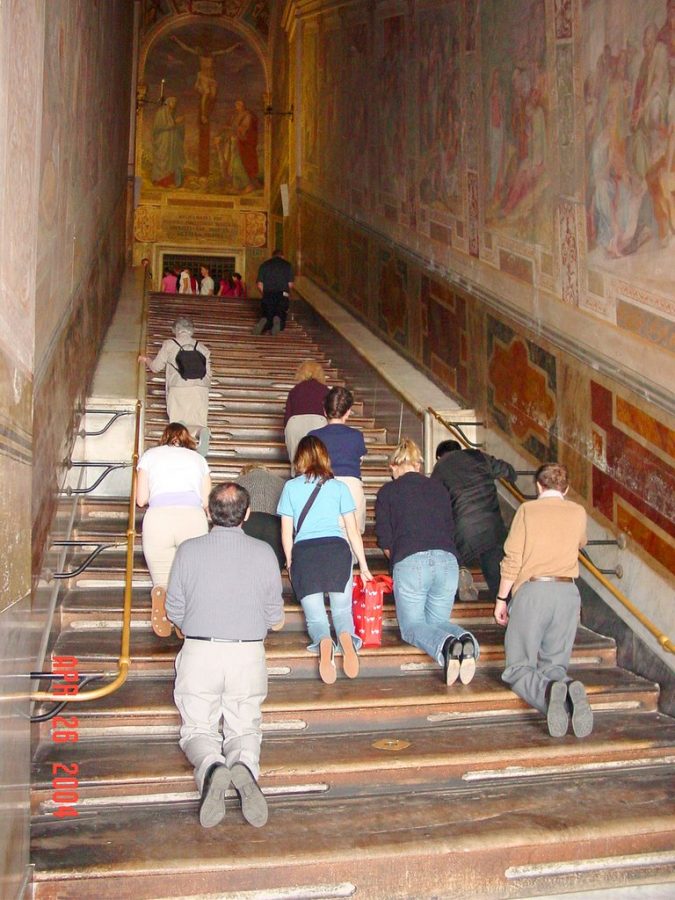Rome Just Became Even More of a Dream Vacation Destination for Catholics
https://thelibertarianrepublic.com/vatican-unveils-stairs-that-jesus-walked-to-face-pilates-judgement-for-first-time-in-300-years/
Scala Santa Sacred Stairs-Rome,italy. Visitors kneel on the Holy Stairs in Rome, which are currently uncovered for the first time in over 300 years.
April 29, 2019
Rome is known for its wealth of religious and historically important pieces that many dream of seeing. It will be an even more desirable location to visit for the next six weeks because the Scala Sancta, latin for Holy Stairs, will be open for visitors to climb for the first time in over 300 years. The stairs are a set of religiously important 28 marble steps that lead to a Catholic chapel in Rome, Italy.
Visitors in the past have been able to walk on the steps, but only indirectly. For over 300 years, they have been protected with wooden planks. The protective planks were put in place in 1723 by Pope Innocent XIII so that they wouldn’t be harmed by any pilgrims who wished to climb them. The marble will be bare for the next two months as the restoration project for the chapel has just been completed. In order to protect the marble, the wood planks will soon be back in place and the marble hidden once again.
While Rome has many historically important landmarks, this landmark is especially treasured by the Catholic church. Many Catholics believe that the Holy Stairs were originally part of Pontius Pilate’s palace in Jerusalem. (According to the Bible, Pilate was the Roman governor of Judea who ordered Jesus’ crucifixion.) Being part of Pilate’s palace, Catholics believe that Jesus climbed those very stairs on his way to face judgement from Pilate. On the stairs themselves lie three crosses that are said to mark the places where Jesus’ blood fell after authorities beat him. Those markings are still meaningful to Catholics today, and some will kneel and climb the stairs, pausing to kiss the crosses as they ascend. After reaching the top of the Holy Stairs, visitors enter a room called the Holy of Holies. This room originally served as a private chapel for popes, but today is open to visitors and holds many relics.
The uncovering of these famous stairs came after a long restoration of the chapel. While the uncovering of the stairs is exciting for many, the newly restored frescoes are another cherished aspect of the chapel. The frescoes cover the walls and ceiling of the chapel, and took over 6 years to restore. The woman overseeing the restoration, Mary Angela Schroth, remarked that “Not everyone gets the Holy Stairs. It’s not a glamorous restoration like the Sistine Chapel.” Though not as well known as other relics in Rome, the Holy Stairs will be a unique place to visit for the next few weeks. Until June 9th, 2019, the Feast of the Pentecost, visitors will be able to kneel on the stairs before the wood panels are returned for protection.












